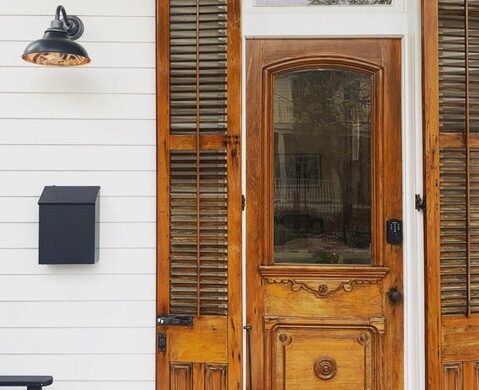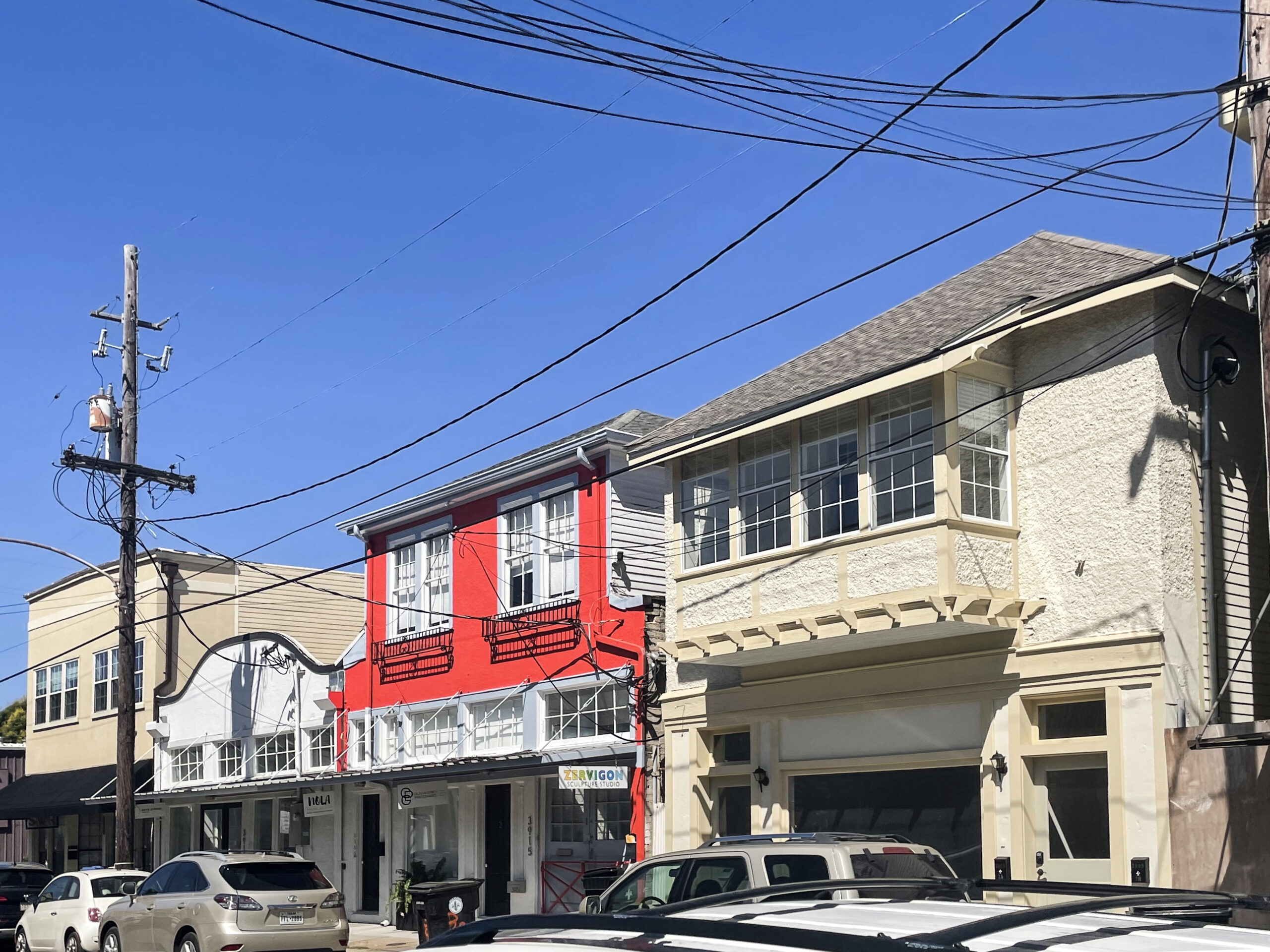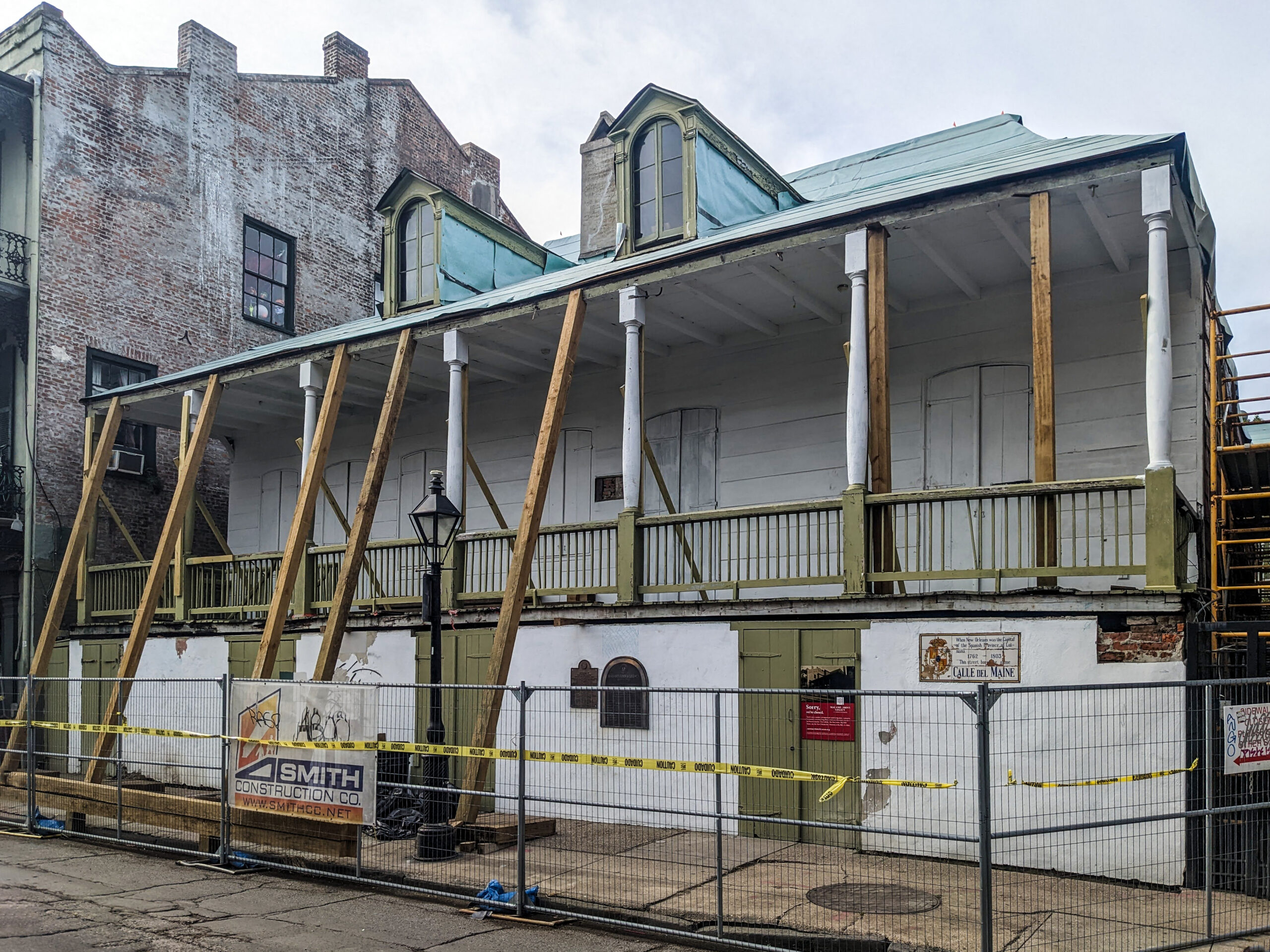This story appeared in the November issue of PRC’s Preservation in Print magazine. Interested in getting more preservation stories like this delivered to your door? Become a member of the PRC for a subscription!
Ask the Expert
In this Preservation in Print feature, we invite readers to send us your home-repair questions, and we’ll track down experts to answer them.
QUESTION
I stained my front door last year, and it already looks worn. What products can I use to make it last longer? Is staining exterior wood worth it in New Orleans?
— Anonymous
 THE EXPERT: Michelle Shoriak
THE EXPERT: Michelle Shoriak
PRC’s Director of Conservation & Education and Revival Grants Program Manager
Michelle’s Answer: There are those who are committed to maintaining the beautiful look of natural wood, even in our harsh sub-tropical climate. One such person is Rachel Osborn, owner of Knot and Wood, LLC. She specializes in refinishing doors and was consulted for this article.
Let’s start by explaining the difference between a stain and a protective coating (such as varnish or lacquer). Think of stain as a penetrating color while the protective coating is a clear layer that sits on top of the surface to make the stain last longer. A water-based stain requires a water-based protective coating on top, while an oil-based stain requires an oil-based protective coating. The protective coating will determine the durability and longevity of the project. Oil-based products are typically more durable than their water-based counterparts.
In most cases, a marine spar urethane (varnish) is a good choice as a protective coating for an exterior wood element that is exposed to direct sunlight. (It’s a product that would be used on a nice wooden sailboat.) But always keep in mind that the upkeep will be a labor of love. But to properly maintain a varnished door, a fresh coat of varnish should be applied every one to two years or at the first sign of wear, especially for doors that get morning or evening sun. For doors and wooden pieces that are protected by shade, trees or a porch, the job will last much longer; the sun is the biggest culprit in the deterioration of a clear coat.
While the protective coating is extremely important, so are the steps you take to prepare the surface before applying the stain and varnish. Prior to staining, you should remove existing paint or debris and sand the door.
Advertisement
It is a common misconception that stripping the wood completely is necessary to refinish it, but that’s not always true. Rachel uses a streamlined process, sanding as needed, rather than removing the finish entirely, to achieve a smooth, even work surface. Start with a lower grit sandpaper (Rachel starts with 150) and work your way up to a higher grit (usually 220 will suffice). Next, make sure that the surface is clean of any dust from the sanding by vacuuming, using a damp cloth or using a tack cloth (or all three). Once you have a clean, dry surface, stain the wood with a lint-free rag or a brush. Rather than letting the stain cure, Rachel prefers to varnish while it is still wet, allowing the clear coat to evenly distribute the color in hard-to-reach crevices and joints in the millwork.
A note from Rachel: The process of refinishing and the success of the project is directly influenced by the quality of the products used, so be sure to invest in high-quality stains and varnishes. Pro tip: high-end varnishes are easier to work with even if you’re not a pro! They have leveling agents that allow the varnish to do some of the difficult, detailed work, like preventing runs or dripping.
Also, multiple coats of varnish will yield results that will last much longer. Note that it is important to repeat the entire process — quick, light sanding (220), stain, varnish — for each coat. Multiple coats of marine varnish — Rachel typically does at least two for new clients — are going to be your best defense against the relentless southern sun. With that, it is possible and relatively easy to keep your doors and wood elements protected and beautiful, even in southern Louisiana.
NOTE: Every house is different so be sure to consult a professional before taking on any home repair project. Ask the Expert provides only general information.
Have a question for Ask the Expert? Email it to prc@prcno.org.
Learn more about historic home maintenance with PRC’s Maintain Right series
Advertisements









